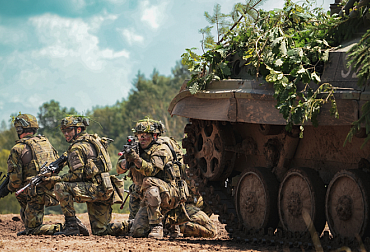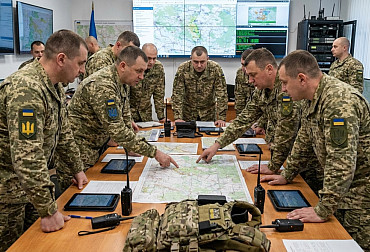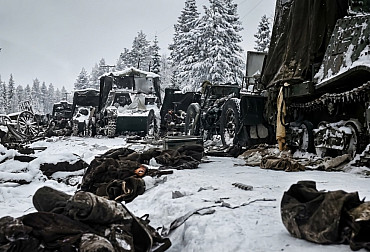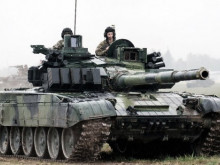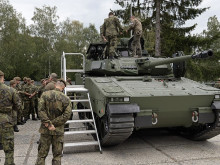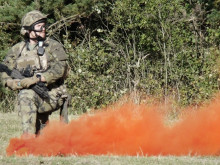Modernization of the Czech Armed Forces Tank Troops in the Hungarian Way
Given the situation in Ukraine, the experience gained so far from this war and the Czech NATO Capability Targets (building a heavy brigade), it is more than necessary to consider the modernisation of the tank troops. When switching to Western technology, the Czech Armed Forces can be partly inspired by the Hungarian way and get older tanks in a shorter timeframe.
The Czech Army wants to modernise its tank troops. Strategic documents such as the Concept of Build-up of the Czech Army 2030 and the Long-Term Outlook for Defence 2030 envisage tanks as part of the heavy brigade under construction. Moreover, the experience from Ukraine shows that tanks are still a valid weapon system on the current battlefield, and despite various "expert" opinions, nothing will change in the medium term at least.
The Czech Republic can take inspiration from Hungary, which has purchased German Leopard tanks of two different versions, among other weapons, as part of the modernisation of its armed forces. These are specifically Leopard 2A4 tanks in the number of 12 units and the latest version of this machine A7+ in the number of 44 units. The A4 version is being purchased by the Hungarian army for the training of its operators, as it is a completely new type of equipment for Hungarian soldiers.
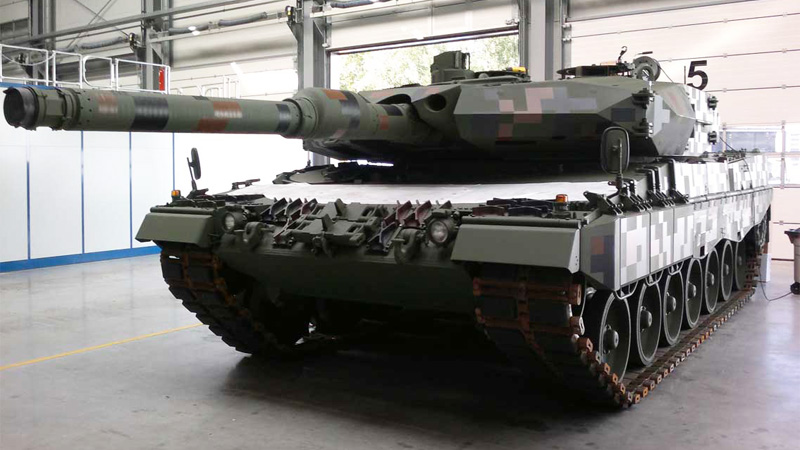 Picture: The Czech Republic can take inspiration from Hungary, which has purchased German Leopard tanks in two different versions, among other weapons, as part of its armed forces' modernization. | Below The Turret Ring
Picture: The Czech Republic can take inspiration from Hungary, which has purchased German Leopard tanks in two different versions, among other weapons, as part of its armed forces' modernization. | Below The Turret Ring
The Hungarian tank modernisation shows, among other things, how time-consuming this process is. The contract for the replacement of Hungarian tanks was signed in 2018. The first A4 tanks then arrived in Hungary in the summer of 2020. Deliveries of the latest tanks are scheduled to begin during the course of next year. Also for this reason, it would be advisable to consider buying a smaller number of older tanks for basic training in the first phase.
A similar initiative appeared already in 2016, when the Army was actively interested in Leopard 2A4 machines from Spain. However, according to open sources, the deal unfortunately fell through for the Czech Army due to the poor technical condition of the aforementioned tanks. We asked the press department of the Ministry of Defence what specific tanks were involved and what were the reasons why the purchase did not work out at the time. We were told the following:
"These were part of the Leopard 2 tanks, which were produced between 1979 and 1983. These tanks were upgraded to the A4 version between 1984 and 1987 and were operated by the Spanish army until 2011. They have been parked since 2012. The state of wear and tear determined by the inspection was consistent with thirty years of service.
There was visible damage to the track belts, damage to the wheels, damage to the hydraulic drive parts of the weapons with fluid leakage, controls, etc. The tanks were equipped with obsolete radios, were not equipped with BVIS (operational and tactical system of land forces) or GPS navigation, thermal imaging cameras were of obsolete design, the tanks had no backup power source, and crew and mechanic training was only available in Spanish.
These and a number of other factors led to the conclusion that the 53 battle tanks on offer represented worn-out, decommissioned equipment in need of overhaul and total modernisation, which the Spanish side offered, but beyond the scope of a possible contract. The Spanish side did not offer any logistical support or any other modifications to the tanks, such as command, recovery, bridge, etc. On the basis of the information received, it was concluded that the offer is not applicable to the Army, which does not have logistic support on the Leopard 2 tank platform."
The acquisition of Leopard 2 tanks makes sense, particularly because of the geographic proximity of the manufacturer and the spread of this type of tank across NATO armies. The armies of Austria, Germany and Poland, for example, have Leopard tanks in their arsenals. The aforementioned Hungary will also introduce these tanks. Furthermore, it is likely that in Slovakia, for similar reasons, the Leopard 2 will be the favourite in the tender for the modernisation of the Slovak tank troops.
At the same time, the Czech Republic would become a member of the Leopard-benutzende Staaten (LeoBEN), which allows its members to share knowledge from the operation of Leopard tanks with each other and with the manufacturer, leading to continuous improvement of this machine. Of course, service and training capabilities are shared. In particular, the sharing of training capacities may, given the fact that our neighbours are or will be equipped with Leopard tanks, provide interesting opportunities for cooperation in the future.
The Czech defence industry would not be left out either. In view of the emerging Rheinmetall-Tatra company, a development centre could be established in the Czech Republic to modernise and develop components of Leopard tanks supplied by Rheinmetall. Germany is one of the Czech Republic's largest trading partners and an important NATO ally. Its role in the direction of the EU is also indisputable.
In the case of the Leopard 2 tanks, there is also a relatively advantageous way of introducing the latest versions into the arsenal. Since 2017, the European Defence Agency has been running the Optimisation of the Main Battle Tank Capability in Europe with initial focus on Leopard 2 (OMBT-Leo2) project. Its aim is, as the name suggests, to optimise the number of modern tanks used by EU Member States. Individual participants in the project have the option of transferring their unneeded Leopard 2 tanks to the European Defence Agency, which will have them upgraded by the manufacturer (Kraus-Maffei Wegmann) to the A7 version and then offer them to other Member States for sale or lease. Leasing could be one of the ways for the Czech Army, given its other modernisation commitments on the one hand and the need to meet the Capability Target on the other.
In practice, the modernisation of tank troops could look as follows. The Czech Army could introduce a smaller number of older A4 or A5 machines so that, while waiting for the latest machines, training could at least partially take place and the whole transition to the Western tank type could be accelerated. Depending on the financial possibilities of the Czech Republic and the manufacturer's workload, the new tanks would then be purchased or leased.
















